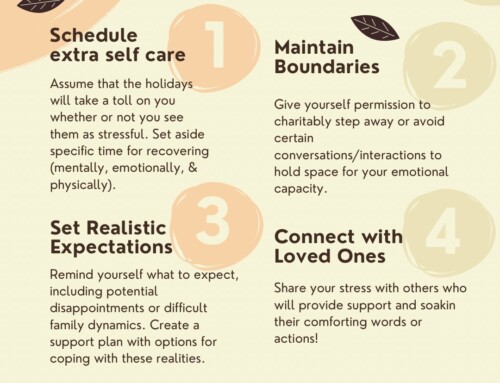As happens every January, you may be hearing and reading about resolutions and goals. This year is a bit different since I think we can all celebrate the fact that we made it through 2020 and that’s enough of an accomplishment. It is with bruised hearts that many of us have made it to the new year. It’s completely understandable to be feeling burnt out and unmotivated due to the continued burden this pandemic has placed on us. So, while we may want to set new goals and work on building new habits, the situation we find ourselves in may seem like a barrier. This is where I think the Incarnation can offer us a path to follow. As we celebrate Christ’s birth, we see a pattern of living that can transform our experience in the world. I’m reminded of the words of Joseph Campbell, “People say that what we’re all seeking is a meaning for life. I don’t think that’s what we’re really seeking. I think that what we’re seeking is an experience of being alive so that our life experiences on the purely physical plane will have resonances within our own innermost being and reality so that we actually feel the rapture of being alive”. I’d take it a step further and say that this “rapture of being alive” is most fully felt through experiencing the healing power of God working in our lives. It is experiencing God coming into our hearts and setting us afire with His love. We see this in the St. Irenaeus quote that serves as Alpha Omega Clinic’s motto, “The glory of God is the human person fully alive”. What the Incarnation offers us is a pattern of living that gives us access to this experience, especially in the midst of our suffering.
Christ embedded himself in a historical context in the humblest and most vulnerable way: as a baby, born of an unknown woman, in a cave with animals by His side. This mystery of the highest (God Himself) united with the lowest (a human vessel) hints at Christ’s central mission: to bring healing from the bottom up. This movement towards vulnerability gives us the first step in healing: acknowledgment of our need for healing and wholeness. We can’t do our way out of our pain and suffering. The only way out is through. This is where setting realistic goals can become a scaffolding of support for us on our healing journey. Unrealistic goals are often the result of trying to will our way out of our current context. Christ did not ignore the context of those He met during His earthly ministry, instead, He leaned right into their experience and offered them a solution to their suffering based on their experience. We see this with the woman at the well. She wanted to be set free from her shame and social isolation by having an endless source of water so she wouldn’t have to come to the well alone anymore. Christ’s solution met her need but in a way that went straight through her pain. He gave her the courage and support to openly acknowledge what weighed on her heart so she wouldn’t have to hide anymore. He set her free by holding space for her deepest fear and pain while offering her encouragement and comfort. Our hearts are managers for Christ to enter and therefore our goals must center around what’s stirring within us on the deepest of levels. This is about going to the source of our pain rather than putting band-aids on the symptoms.
How goals Function in Our Lives
I mentioned the word scaffolding above. This is how goals should function in our lives; providing us with a direction and boundary to guide our efforts. However, if the goals we set are unrealistic, they can become a prison, forever repeating a pattern of failure, discouragement, and helplessness. The process of setting goals involves using our experience as feedback, not an indictment. Failure can be a tool for adjustment; try setting the goal slightly lower and see what happens. Keep adjusting until you can consistently (NOT perfectly) hit your goal. Much of this process is about moving from rigidity to flexibility; more fully expressing the potential of our humanity so lovingly expanded by Christ. By focusing on our efforts, we can maintain consistency without always meeting our goals. Sometimes success looks like survival; it can be heroic just to get out of bed. One question that can help provide clarity and consistency is this, “where is the next best place to focus”. For example, sometimes “failing” is actually an opportunity to work on encouraging ourselves and moving towards God’s compassion, mercy, and love. Our soothing ointment can be as simple as inviting God into our pain (“Lord be with me at this moment; resurrect my deadness, heal my wounds, and enlighten my darkness be sue I need you”). The Mystery of the Incarnation shows us that there is no place “too low” for God to enter.
How to Set and Track Realistic Goals
One of the most important aspects of setting goals is setting yourself up for success. I often ask my clients what their goals are and then as we work out the details, I encourage them to aim lower. A common goal would be asking a client to notice what’s happening for them on the inside when they are experiencing the thing that prompted them to come to therapy. If they can slow down whatever is happening at the time and shift something for the better, great, but if all they can do is describe the heaviness they felt in their chest, that’s just as good. Both efforts mark a change towards healing, progress, and a new experience. It’s so important for us to expand our experience of whatever it is that’s contributing to our suffering. Feeling successful after being stuck for a while is like finding water in the desert. It’s important to aim for reasonable and achievable changes as much as possible. It is also important to note that progress often takes the shape of a lightning bolt, complete with peaks and valleys. As long as the trajectory is moving in the right direction, you’re making progress!
The following three features are crucial for setting realistic goals: measurable, repeatable, and flexible. Goals that are measurable are composed of tangible actions that can be taken, often described in detail, and include markers of progress. Goals that are repeatable are defined by efforts that can easily be repeated most days. Goals that are flexible include options for adjustments based on circumstances that may change or feedback along the way (an example would be how I framed failure in the section above). Here are some questions/prompts that can help you construct your goals with these features in mind:
- What would you like to work on and how is this related to your deepest needs as a human?
- What do you find yourself longing for?
- Describe in as much detail as possible what you will be able to see that will tell you you’ve attained your goal. We can often use behavior or outward signs to track progress but focusing on behavior alone can neglect the inward changes that fuel and support outward change. Emotion fuels behavior so facing our own vulnerability is an essential part of growth and change. This could look like noticing a more compassionate inner dialogue, a more charitable and loving way of thinking of others, or a slower and less reactive pattern of interacting with yourself or others. Reaching your goal may not mean total elimination of what you’re working on but rather a change in how you respond to it.
- How will your life change or be different once you’ve attained this goal?
- What have you tried before? What was most successful and how can you use this now? What can you learn from past attempts that got close but weren’t completely successful?
- What do you need and what do you currently have at your disposal in order to reach your goal? What are your resources and strengths?
- What might block you from reaching your goal?
Once you’ve taken some time to explore these questions (do your best and answer what seems most helpful), you can start working on your goal with this question: “What’s one small step you can take towards your goal, starting right now?”. You can repeat this step every day and process what it was like for you at the end of each day. If it didn’t go very well or was very difficult, you can focus on what happened when you tried, what came up for you, and how might this need to be addressed. What parts of your heart might be aching and need tending to? How might these goals need to include soothing an aching or bruised heart? There is a pain that comes with growth; a little death of what was before. It’s ok to grieve or feel sad about changing. After all, we are leaving the familiar territory for the discomfort of an uncertain future of new possibilities. We see this fulfilled in Christ, who vulnerably and courageously accepted death and suffering to conquer death itself. Death then blossomed into Resurrection and provided creation with a new path to glory. Our healing comes as we try to turn our suffering into glory, becoming more fully alive as beacons of hope. It’s not always about doing more but rather meeting ourselves right where we are to honor and explore our experience, expanding what may be possible instead of being stuck in our pain.
May the Lord ignite your inner world and your heart with the flame of His love throughout this new year and every year.
– Jonathan Dixon, LMFT
Jonathan Dixon is a Licensed Marriage and Family Therapist in Virginia who has offered mental health services at Alpha Omega Clinic’s Fairfax office since 2013. He is an active member of the Association of Marriage & Family Therapy. He also seeks to inspire healing and wholeness through reflections on Instagram @deepspeakstodeep.





